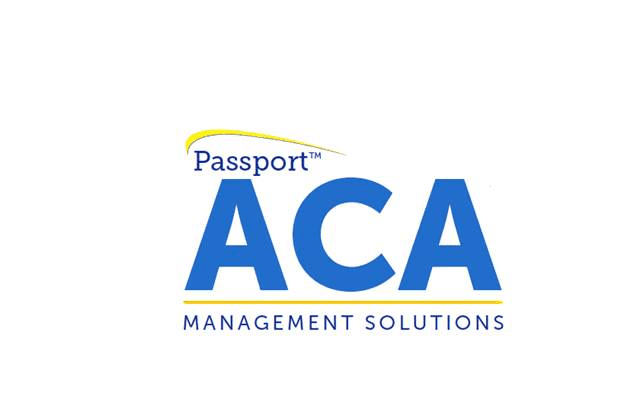
ACA Penalties: IRS Letter 226J
Hello again,
This post is for Applicable Large Employers (ALEs) required to comply with the Affordable Care Act. We hope you find it helpful.
The following information is quoted from an infographic by First Capitol Consulting:
How to respond Letter 226J
· Employee receives a premium tax credit through a government exchange
· Exchange sends list of PTC credits to the IRS
· The IRS compares PTC recipient data against ALE’s 1094-C & 1095-C filings
If a PTC recipient is identified as a full-time (FT) employee of an ALE for one or more months of the reporting year (e.g., based on the receipt of a 1095-C schedule from the ALE), and the IRS determines that the PTC recipient was not offered healthcare coverage from the ALE: The IRS will calculate a proposed “Employer Shared Responsibility Payment” (ESRP) to be assessed on the ALE.
For each “penalty eligible” month, the IRS calculates the penalty as follows:
· If the ALE did not offer healthcare coverage in 2015 to at least 70% of all FT employees and their dependents for such month, the penalty will be calculated as: [ $2,080* x (All FT Employees – 80)].
For subsequent years, ALEs will need to offer coverage to at least 95% of FT employees and dependents and penalty calculation will be [$2,000* x (All FT Employees – 30)].
· If the ALE offered healthcare coverage in 2015 to at least 70% of all FT employees and their dependents, the penalty will be calculated as: [$3,120* x (# of FT employees who received a PTC)].
For subsequent years, ALEs will need to offer coverage to at least 95% of FT employees and dependents.
* These amounts are adjusted annually
The IRS sends the Employer IRS Letter 226J proposing an “Employer Shared Responsibility Payment”
· Total proposed penalty for the calendar year, with calculations shown
· List of employees who received a Premium Tax Credit, by month
· Employer has about 30 days to respond, but may request a short extension
Employer Mandate Penalty Defense Process
Phase 1 Goal Penalty Elimination
· Review 1094-Cs and 1095-Cs for PTC Listed Employees.
· Verify Enrollment Status of PTC Employees.
· Verify Offers of Health Coverage for Non-Enrolled PTC Employees.
· Verify FT/LNA Status of PTC Employees.
· Prepare PTC Employee Verification Report.
· Calculate Adjusted 4980H Assessment.
· Correct PTC Listing Errors.
· Assist in Client Response to Letter 226J.
Phase 2 Goal (If necessary) Penalty Reduction
If Phase 1 of the Penalty Defense Analysis is unable to reduce the number of properly PTC Listed employees to zero, then the Employer may choose to perform a comprehensive redetermination of the tax year data.
A proficient vendor may be able to dramatically reduce the penalty exposure for a given tax year by performing an accurate redetermination of the ACA data underlying the ACA filings for a particular tax year.
Employer responds to Letter 226J using form 14764 “ESRP Response”
Employer will either:
- Agree with the initial assessment and pay proposed penalty.
If the ALE pays the originally proposed assessment amount, the process ends here.
- Disagree all or in part with the initial assessment and provide revised proposed penalty.
The IRS will acknowledge the Employer’s response to IRS Letter 226J with IRS Letter 227. Letter 227 will describe further actions that the Employer may need to take.
If the Employer disagrees with the IRS’s proposed penalty amount in the Letter 227, Employer may request a Pre-Assessment Conference with the IRS Office of Appeals within 30 days of the date of Letter 227.
Note: If the ALE does not respond to either Letter 226J or Letter 227, the IRS will assess the amount of the proposed employer shared responsibility payment and issue a notice and demand for payment, Notice CP 220J
There are 5 different 227 letters
Letter 227K
This is an excellent letter to receive. It means your case has been resolved to your organization’s satisfaction. Essentially, Letter 227K acknowledges that the information in the Letter 226J response was accepted and the IRS inquiry has closed. Your organization does not owe an ESRP.
Letter 227L
While not as thrilling as receiving Letter 227K, receiving this version of Letter 227 is very positive. It is sent when the IRS agrees with the information your organization provided in response to Letter 226J making the case for a reduced ESRP. The organization still needs to make a payment, but for an amount the organization accepts as responsible for payment, but smaller than the originally proposed amount.
Letter 227M
It’s not so great to receive a version of Letter 227M. That’s the version in which the IRS disagrees with your organization’s Letter 226J response and simply reiterates its original proposed penalty.
Letter 227J
This acknowledges the receipt of the signed response to Letter 226J Form 14764 in which an organization agrees to pay the ESRP as assessed. After you receive this letter, the case will be closed. No response is required other than to complete payment of the penalty.
Letter 227N
This acknowledges the decision reached in Appeals and shows the ESRP based on the Appeals review. After issuance of this letter, the case will be closed. No response is required.
The information above was sourced from an infographic by First Capitol Consulting.
Contact us for assistance with ACA penalty relief. Or learn more about our ACA Software and Services.
